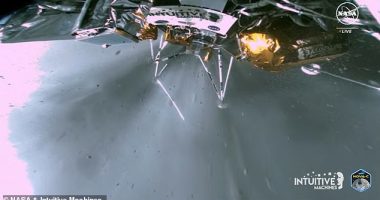BLASTING the surface of the Moon with microwaves could help humans colonize the lunar surface.
Getting construction equipment to the Moon is no easy feat – so scientists have developed a mind-bending workaround.
One of the problems space scientists are trying to solve is how to build safe and cheap landing pads on the Moon for spacecraft.
If a rocket takes off or lands, it would “sandblast” everything around them at over 10,000mph – because there’s no air to slow the rocket plume down.
Hauling construction equipment 230,000 miles across space would be extremely expensive.
But University of Central Florida researchers have come up with a clever solution as part of a Nasa-funded project: microwaves.
The idea is that by melting lunar soil using microwaves, it would be possible to create Moon landing pads relatively cheaply and easily.
The US already has plans to return to the Moon with its Artemis missions – with a crewed landing set for as soon as 2025.
And in the future, missions will need to set up housing, labs and more.
“It’s strategically important for our nation to have a presence on the Moon because the economic value of the resources in space is very high,” said Phil Metzger, a planetary scientist at the Florida Space Institute.
Most read in News Tech
According to scientists, using a melting or “sintering” process with microwaves was the cheapest way to create landing pad rings.
It said this was true only as long as the cost of transportation to the Moon stayed above $100,000 per kilogram.
Once transportation becomes cheaper, building landing pads from polymers is most effective.
The microwave system works in combination with magnetic fields that draw the most “microwaveable” minerals to the surface.
“We’ve shown that we can increase microwave absorption by somewhere in the range of 70% to 80% by sorting particles based on magnetic susceptibility,” Metzger explained.
“The numbers showed us that sintering is actually the best method because it does require some energy.
“But the cost of the energy is less than the cost of construction and having to bring consumables to the moon.”
Part of the problem for scientists is that building on the Moon has very specific challenges.
UCF scientists have teamed up with space construction firm Cislune to try to come up with a solution.
“Concrete and steel are used extensively on Earth and have come about from millennia of development and scaling up of industry based upon plentiful water, coal and air,” said Cislune chief Erik Franks.
“On other planets we don’t have any fossil fuels, and air and water are more valuable than gold.
“Different processes will be required, and UCF and Cislune are working together to solve these problems with innovative solutions like microwave sintering and soil beneficiation.”


The team has already simulated microwave-melting simulations with “excellent” results.
But it’s still unclear whether Nasa will adopt the technology for its lunar landing pads or not.










